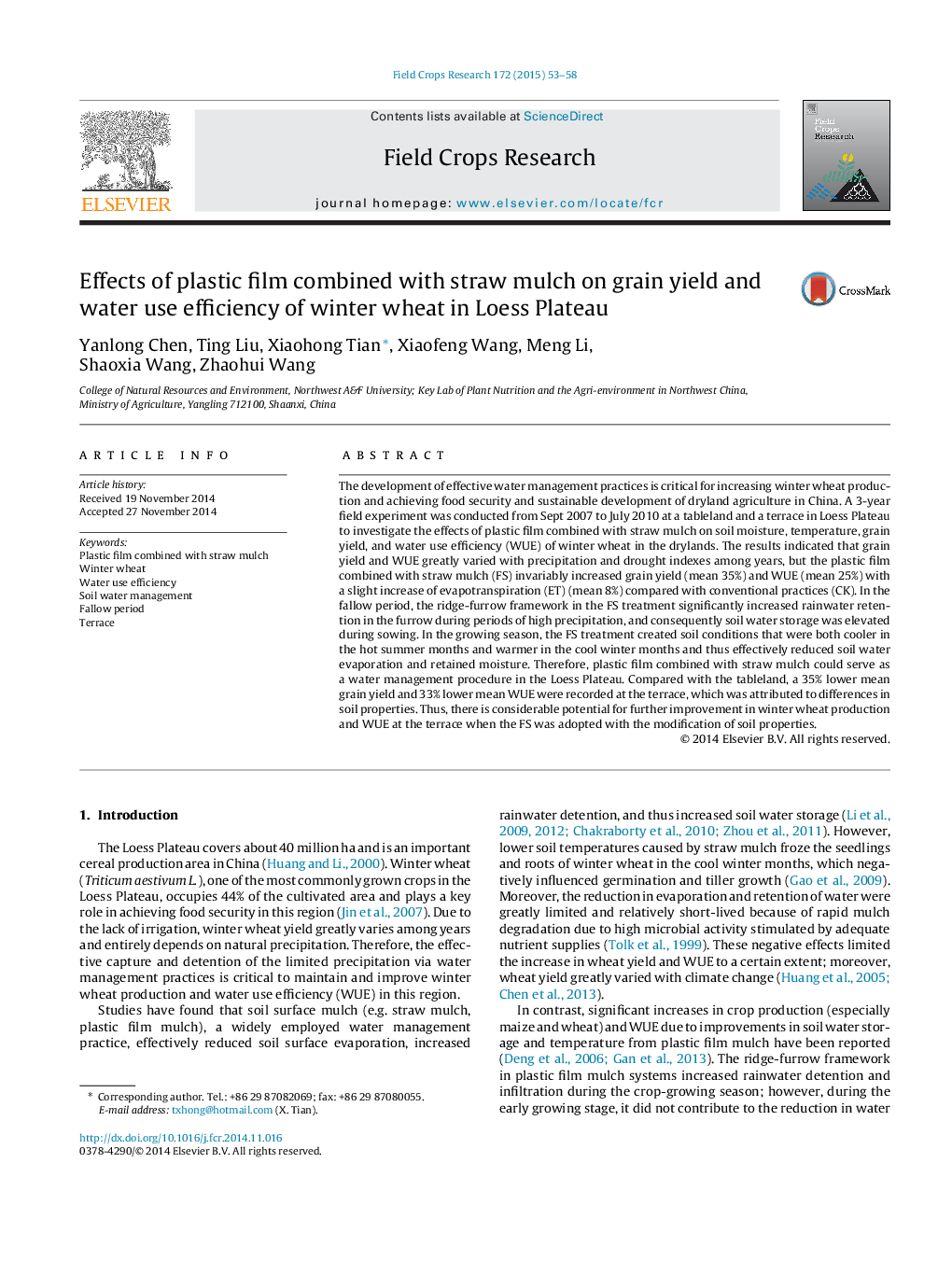| Article ID | Journal | Published Year | Pages | File Type |
|---|---|---|---|---|
| 6375003 | Field Crops Research | 2015 | 6 Pages |
Abstract
The development of effective water management practices is critical for increasing winter wheat production and achieving food security and sustainable development of dryland agriculture in China. A 3-year field experiment was conducted from Sept 2007 to July 2010 at a tableland and a terrace in Loess Plateau to investigate the effects of plastic film combined with straw mulch on soil moisture, temperature, grain yield, and water use efficiency (WUE) of winter wheat in the drylands. The results indicated that grain yield and WUE greatly varied with precipitation and drought indexes among years, but the plastic film combined with straw mulch (FS) invariably increased grain yield (mean 35%) and WUE (mean 25%) with a slight increase of evapotranspiration (ET) (mean 8%) compared with conventional practices (CK). In the fallow period, the ridge-furrow framework in the FS treatment significantly increased rainwater retention in the furrow during periods of high precipitation, and consequently soil water storage was elevated during sowing. In the growing season, the FS treatment created soil conditions that were both cooler in the hot summer months and warmer in the cool winter months and thus effectively reduced soil water evaporation and retained moisture. Therefore, plastic film combined with straw mulch could serve as a water management procedure in the Loess Plateau. Compared with the tableland, a 35% lower mean grain yield and 33% lower mean WUE were recorded at the terrace, which was attributed to differences in soil properties. Thus, there is considerable potential for further improvement in winter wheat production and WUE at the terrace when the FS was adopted with the modification of soil properties.
Related Topics
Life Sciences
Agricultural and Biological Sciences
Agronomy and Crop Science
Authors
Yanlong Chen, Ting Liu, Xiaohong Tian, Xiaofeng Wang, Meng Li, Shaoxia Wang, Zhaohui Wang,
